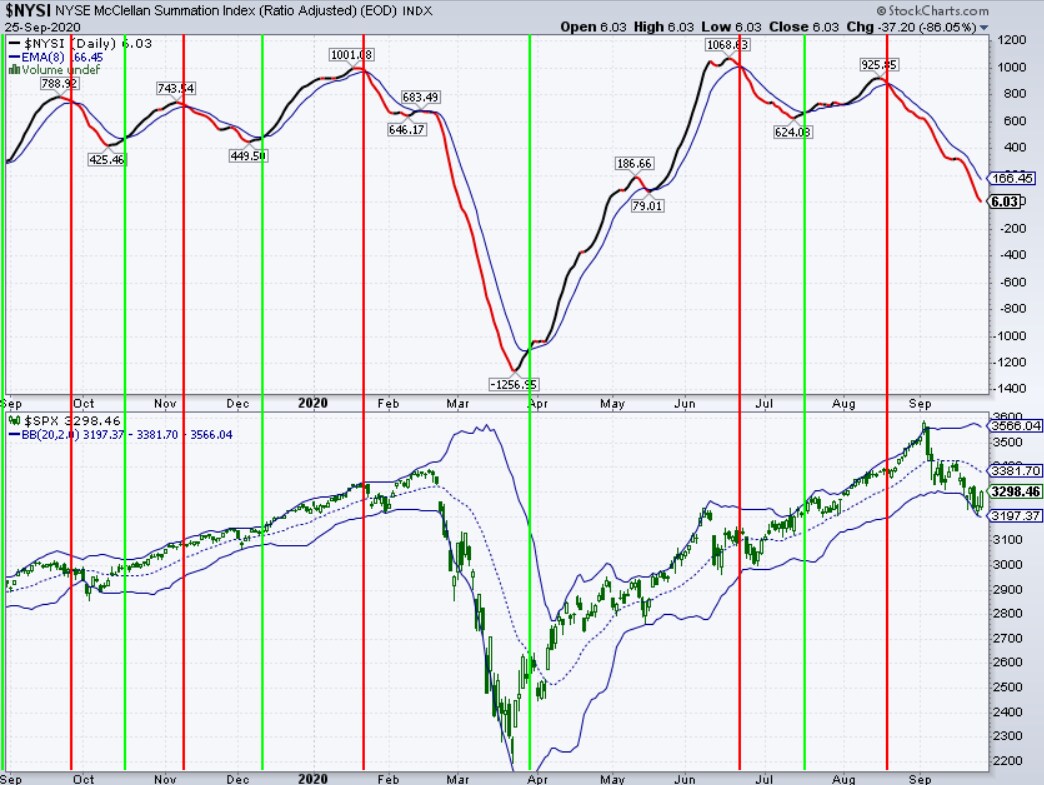At OptionsHawk, our core focus is analysing activity in the options market live during trading hours and discovering notable trends that carry market-level and individual stock-level implications.
The options market has long been an early predictor of future stock moves due to a number of dynamics we have previously discussed in writings about our process, such as unequal information dispersion, institutional access to better tools and information, and the impact of positioning to market-maker delta/gamma hedging.
Another important topic is determining what kind of options flow is considered worth following depending on different market conditions. This is a key factor that allows us to maintain a high win-rate on curating our “high-impact” notable trades.
On a higher level, this is influenced by the top market signals that assess the trend while being mindful of the timeframe (expirations) of options flow trades aligning with potential diverging market trend signals for short versus long term views.
Bull or bear?
Firstly, it is important to discuss the top market-timing signals that will give us one of two indications, a bull signal or a bear signal.
We mainly focus on breadth/momentum indicators, but also keep a close eye on sentiment indicators for added confidence and earlier signalling. A few sentiment indicators worth following include the 50-day moving average of the CBOE Equity Put/Call Ratio, NAAIM Exposure Index, Investor Intelligence Survey, and VIX Term Structure.
The key breadth/momentum indicators to focus on include:
NYSE McClellan Summation Index: This is a long-term version of the McClellan Oscillator — a breadth indicator based on advances and decliners and is a cumulative measure of movements. It interprets the direction and power of the market. There are a variety of ways to use the indicator, such as looking for divergences, but my method is to apply an eight-day moving average to the indicator. When the index is above the eight-day exponential moving average we are in a bull signal. Conversely, when below we are in a bear signal with crossovers being buy/sell signals.
Utilising this method has been key for many years in avoiding major market corrections and catching major trend moves, and, although it is often early, it has tended to almost always play out. (Chart via StockCharts.com)

Eight/21-day moving averages: Looking at these shorter time frame moving averages, we are clearly focusing on momentum in a shorter-time frame window and other moving averages can be used based on your investing style. When the eight-day is above the 21-day we are in a bull signal, and conversely when below we are in a bear signal, while crosses are inflection points.
Options flow in bull signals
When our signals are in bull mode, we are focusing mainly on call buying activity and still want to stick to the Hawk 350 — a curated list of the best-in-class companies in the market.
We also focus on put selling activity as another kind of bullish flow. The strongest signals come in name seeing large (relative to average and in notional) call buying across multiple strikes and time frames and generating signals on multiple days, showing multi-day accumulation.
When we see put buying activity, we are mostly ignoring the action and figuring it to be hedging long stock positions, especially when occurring in a Hawk 350 name and names with bullish momentum. The one exception is for names that individually have bearish momentum (eight-day moving average below 21-day moving average) and are lagging the market.
For those names put buying — particularly longer-dated — can provide an opportunity to build some short positions to be early for if the trend flips back to a bear signal. We pay most attention to longer-dated, specifically during earnings season, as much of the shorter term put flow is event-hedging with limited reliable implications.
Another flow trend we look for when bullish trend moves become extended/overbought is opening call sales across the leaders. This indicates institutions are setting levels willing to get called away (writing covered calls or overwriting), which tells us the amount of upside seen remaining in individual stocks.
This can also signal us to look at covered calls and/or collars in our stock positions. We look for married put positions — buying stock with puts. This is a good indication of buyer interest in names while pairing with puts, generally seen in low-volatility environments for cheap protection. It has tended to be a bullish indication when utilising 3-month out and further expirations as a sign the investor plans to own the stock for the long-haul but sets a floor “stop” by owning the protective put option.
Options flow in bear signals
When our signals are in bear mode, we are generally removing long market exposure to start to focus more on large opening put buying activity.
We still do not want to bet against best-in-class companies in the Hawk 350, as early on there tends to be a rush for protection by investors that own the names but are not exactly betting on a decline.
We pay strong attention to put buying in individual names exhibiting bearish technical momentum and particularly in companies outside of the Hawk 350 that have posted weak results and/or have limited growth opportunities. We also pay closer attention to names with elevated short interest and those in which short interest is trending higher.
On the bullish side, when we are in a bearish market signal, we look for large opening put sales in our favourite stocks that indicate a willingness for institutions to buy large notional amounts at a particular level.
We also shift our bullish strategies that look more at bull put spreads or calendar/diagonal spreads rather than straight call options until the market triggers a new bull signal.
Conclusion
The market signals dictate our trading style both on what direction to position, how aggressively to allocate and the right strategies to use. We find this kind of fluid approach generates a higher win-rate, better returns and manages risk more effectively.
Disclaimer Past performance is not a reliable indicator of future results.
CMC Markets is an execution-only service provider. The material (whether or not it states any opinions) is for general information purposes only, and does not take into account your personal circumstances or objectives. Nothing in this material is (or should be considered to be) financial, investment or other advice on which reliance should be placed. No opinion given in the material constitutes a recommendation by CMC Markets or the author that any particular investment, security, transaction or investment strategy is suitable for any specific person.
The material has not been prepared in accordance with legal requirements designed to promote the independence of investment research. Although we are not specifically prevented from dealing before providing this material, we do not seek to take advantage of the material prior to its dissemination.
CMC Markets does not endorse or offer opinion on the trading strategies used by the author. Their trading strategies do not guarantee any return and CMC Markets shall not be held responsible for any loss that you may incur, either directly or indirectly, arising from any investment based on any information contained herein.
*Tax treatment depends on individual circumstances and can change or may differ in a jurisdiction other than the UK.
Continue reading for FREE
- Includes free newsletter updates, unsubscribe anytime. Privacy policy






